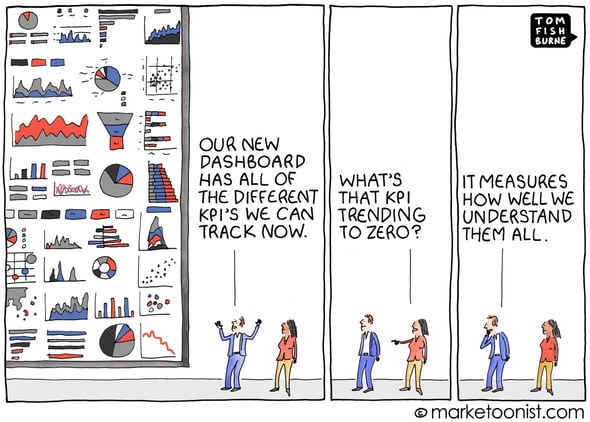After working with many organizations it has become very apparent that desired cultural change is a result of good change management and organizational design. Equally, most of us would also agree that successful change can only happen when the majority of employees rally and cooperate to effect those changes ― cultural improvement is a result of these interdependent efforts. With today’s press to modernize manufacturing ― through digitalization, data capture, and a focus on operational excellence ― every company must get the change management and culture pieces of the puzzle exactly right if they want to achieve the promise of sustainable performance improvement, competitive advantage, and financial gains.
“Cultural alignment” sounds easy, and many business consultants distill it to perhaps three, five, or eight things required for a “healthy culture.” Despite all the advice and resources available (and valiantly applied), when our operational excellence experts visit manufacturing sites, they frequently encounter attitudes, behaviors, and practices that signal cultural weaknesses, or worse, cultural barriers to effective change.
While there are hundreds of things that can hold up your operational excellence efforts, there are toxic symptoms that are easy to spot when conducting a change management effectiveness assessment.
Culture Toxin #1 | Thinking Your Company is “Good” Without Knowing What Good Looks Like
All too often there exists an air of complacency within organizations; it has not made the effort to benchmark or otherwise find out what the best organizations are doing. This leads to little desire to pursue improvement efforts. A primary example is one organization that had a particular scrap target ten times higher than their competitors!

Culture Toxin #2 | Ignoring “Culture” Altogether
We get calls all the time from companies that want to launch an operational excellence program or take next steps to extend existing efforts. Again, as part of our standard evaluation, we assess culture, through focus groups, interviews, questionnaires, and good old fashioned observation. As we proceed with these efforts, sometimes leadership will say, “We need an operational excellence solution, and we need to de-emphasize the need for a culture shift.” This is almost a sure sign that operational change will be problematic and probably unsustainable. Tools and techniques are in and of themselves insufficient. On the other hand, engaged employees using the right tools and techniques will lead to sustainable performance improvements.
Culture Toxin #3 | A Different View of the World
The chief supply chain officer of one industrial organization we worked with acknowledged that his company had several culture-related problems and weaknesses, which we also clearly observed. However, most of the plant managers felt things were “just fine,” and “working well.” Shift supervisors’ perceptions sometimes lined up with the plant manager’s opinions, but not always. Often the most accurate feedback on organizational culture comes from those adding the value ― the shop floor employees! (Where value is defined as something customers are prepared to pay for).
Culture Toxin #4 | No (or Limited) Collaboration
Let’s face it ― manufacturing is a team sport. Everyone throughout the plant usually understands that concept. At the same time, however, there are often wide gaps between the operational, maintenance, quality, business systems, operational technology (OT), and other support functions (finance, HR, safety, environmental, etc.). How are companies supposed to interactively engage all employees, refine processes, and get the most appropriate technology in place if the organization’s functions aren’t aligned? There needs to be a shift in thinking and behavior ― from functional/hierarchical to process-focused/lateral.

Culture Toxin #5 | Regional Blinders
Companies frequently don't pause to consider how local norms and attitudes may affect execution. For example, a lot of people don’t realize that, in general, operational excellence is more difficult to implement in North America than in South America or Asia. Consider the example of a multi-national company with a global "Zero" program we worked with — zero injuries, zero waste, zero unplanned downtime, etc. During widespread corporate transformation, that most admirable of American traits ― enterprising tenacity ― emerged individually as, “How can I impact this and make my mark?” While not a negative characteristic, this added nuance and a layer of complexity to execution with many individuals in different locations trying to modify the globally agreed-upon design and execution plan. Ultimately, that posture can possibly lead to better solutions and innovation, but it can also result in slower execution, and, on occasion, disagreement and less than 100% buy-in.
Culture Toxin #6 | Less than “Enthusiastic” Attitude
Not every employee is going to be an exuberant team member; indeed, everyone has their own approach to their role, one-on-one interactions, and engaging with the team at large. That’s expected and in many ways desirable, since diverse personalities add flavor, perspective, and much enjoyment to work life. Overall or collective attitude is a very different thing, however. Many red flags can signal underlying cultural problems and a lack of collaboration. For example, poor general tidiness and organization, lack of effective visual management and action planning/follow-through, ineffective meetings with poor participation, and other symptoms.
Safeguard Operational Excellence Efforts: Stay Focused, Address and Eliminate Toxins as They Arise
Not every company will exhibit all of these “culture toxins,” but neither is this a complete list! One given is that companies that consider and address “people elements” early in the operational excellence initiative will head off most potential toxins at the outset, or minimize the severity of them should they arise. Ultimately, if your company perceives financial or competitive value in pursuing an operational excellence program, then it’s worth considering engaging an external expert that can conduct an objective assessment of the company’s objectives, culture, processes, and technology, and position your firm for early success.
Learn how a world-class manufacturing company aligned culture, processes, and technology.









